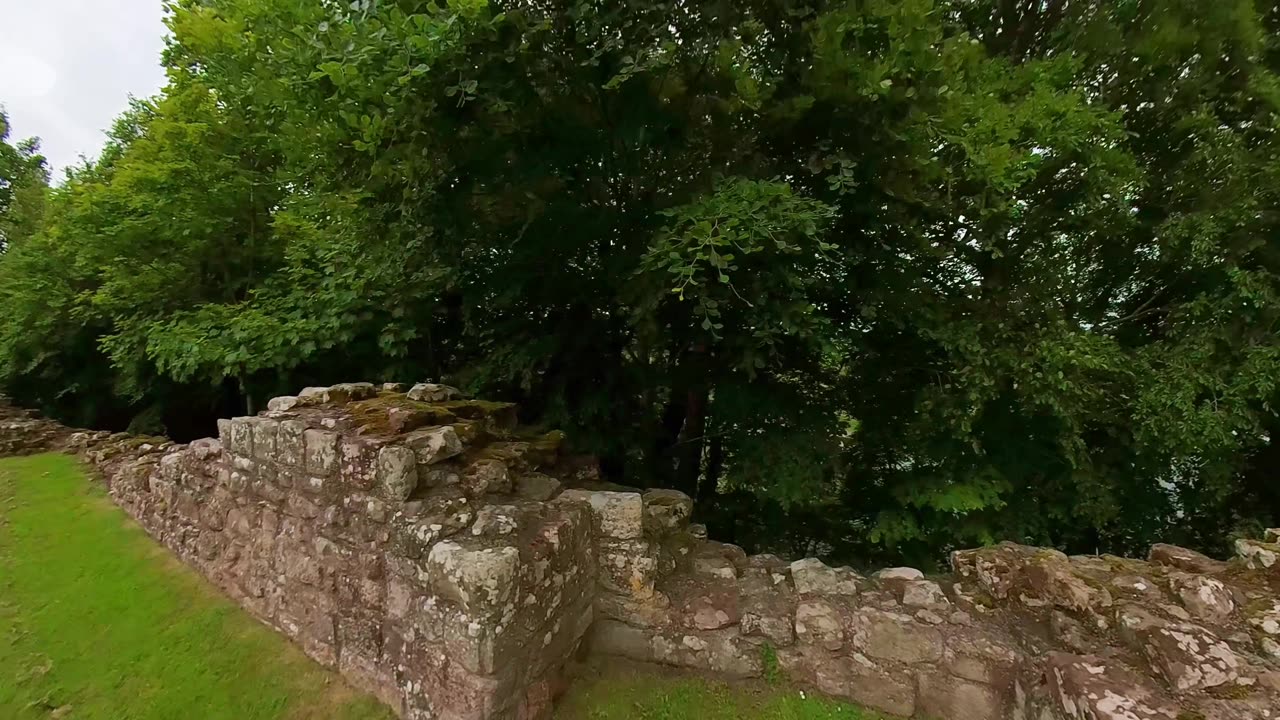Premium Only Content

The Most Dangerous Castle - Norham
Norham’s founder was Ranulph Flambard, Bishop of Durham from 1099 until 1128. In the medieval period the Bishops of Durham enjoyed near-kingly powers, in return for enforcing order along the English–Scottish border.
The region could be wild and lawless, and sometimes erupted into open conflict. In wartime Norham’s English garrison defended the Tweed fords, an easy crossing point into England. Together with the nearby castles of Berwick and Wark, Norham was an essential part of the defences of the eastern border.
The importance of Norham was illustrated when Henry II ordered Hugh du Puiset, who became Bishop of Durham in 1153, to rebuild the castle. This Bishop Puiset did on a grand scale, erecting the great tower on the site of Flambard’s original two-storey hall to provide high-status accommodation.
Between 1208 and 1212 King John also spent large sums on the castle. Its strength was demonstrated in 1215 when Alexander II of Scotland besieged Norham for 40 days, but failed to take it. Peace between England and Scotland was signed at Norham in 1219, and lasted along the border for most of the 13th century.
The most noteworthy event in Norham’s history took place in May 1291, when Bishop Anthony Beck entertained Edward I (r.1272–1307) and his advisers at the castle while the king arbitrated between 13 competitors for the Scottish throne (a process known as the Great Cause).
Judgment was made in favour of John Baliol in 1292 at Berwick Castle, and three days later Baliol paid homage to Edward in the hall at Norham.
Edward I’s subsequent claims of overlordship over Scotland precipitated prolonged warfare in the borders. The Scots besieged Norham unsuccessfully in 1318, 1319 and 1322, and eventually took it in 1327, but it was restored to the bishop the following year.
Thereafter Norham benefited from a period of relative peace, before it was besieged by James IV of Scotland in 1497 in support of Perkin Warbeck, a pretender to the English throne. The castle resisted attack for two weeks before an English army relieved it.
Much more significant damage was done in 1513 when James IV invaded with a large army, and this time captured Norham after a short siege. In less than three weeks Norham was restored to the Bishop of Durham after the English defeated the Scots at the Battle of Flodden nearby. But the ferocious Scots bombardment had resulted in great damage.
Such was Norham’s importance that rebuilding began almost immediately, this time to transform the castle into a powerful artillery fortress. English military engineers made alterations so that the garrison could return fire with great force from covered positions. They rebuilt the wall to the outer ward, encasing its lower courses in earth to provide strength and absorb incoming shot, constructed gun towers and incorporated arched gun positions.
The castle was maintained for most of the century, but in 1596 Elizabeth I refused to spend any money on it, and after the union of the English and Scots crowns in 1605 it slowly fell to decay. The ruins then passed through many hands until 1923, when they were placed in the care of the state.
Music courtesy of Alexander Nakarada (creatorchords.com)
-
 5:15:22
5:15:22
NeoX5
5 hours agoKhazan: The Road Less Taken | Part 5-2 | Rumble Studio | Rumble Gaming
34.9K1 -
 LIVE
LIVE
TwinGatz
11 hours ago🔴LIVE - He Is Doing His Best | ARMA Reforger
649 watching -
 54:40
54:40
LFA TV
15 hours agoSee God in the Trade War | TRUMPET DAILY 4.7.25 7PM
60.7K15 -
 1:18:30
1:18:30
Sarah Westall
8 hours agoNew Study: EMFs Literally Put You into a Brainwave Cage; Reclaiming your Mind w/ Ian & Philipp
75.2K22 -
 35:54
35:54
SantaSurfing
9 hours ago4/7/2025 - Trump Tariff impacts - he wants no Capital Gains Tax! Inflation falls to 1.22%!
45.1K31 -
 59:17
59:17
We Like Shooting
20 hours ago $2.63 earnedDouble Tap 404 (Gun Podcast)
29.9K1 -
 10:06:28
10:06:28
ZWOGs
13 hours ago🔴LIVE IN 1440p! - GRAPHIC DESIGN, Schedule 1, TARKOV, GTAV RP!! | Dwindle Digby | - Come Hang Out!
25.9K -
 4:51:28
4:51:28
Meisters of Madness
9 hours agoThymeSia - Power of the Plague
20.5K -
 1:13:25
1:13:25
Kim Iversen
11 hours agoAmerica First? Then Why Are We Funding This? | Empathy Is the Left’s Weapon—Here’s Why It’s Dangerous
135K178 -
 1:24:11
1:24:11
vivafrei
12 hours agoCanadian Elections! Trump Tariffs! Panicans and Hysterics! And Jena Griswold for AG of Colorado?
117K75